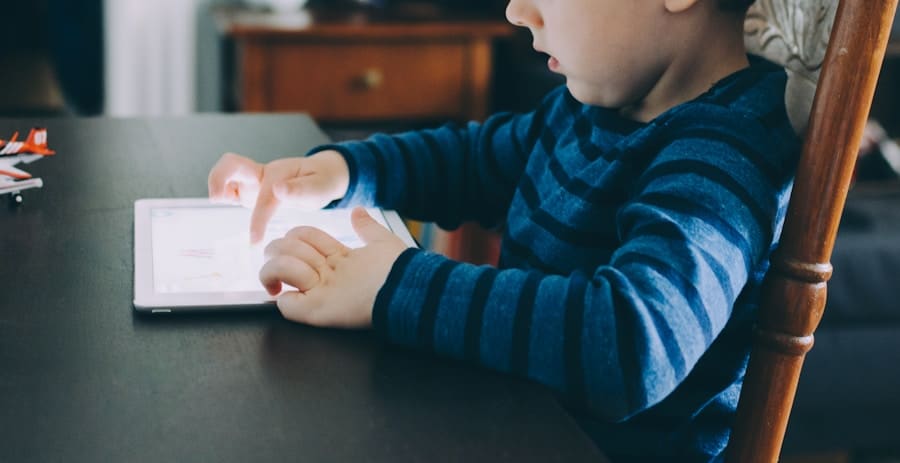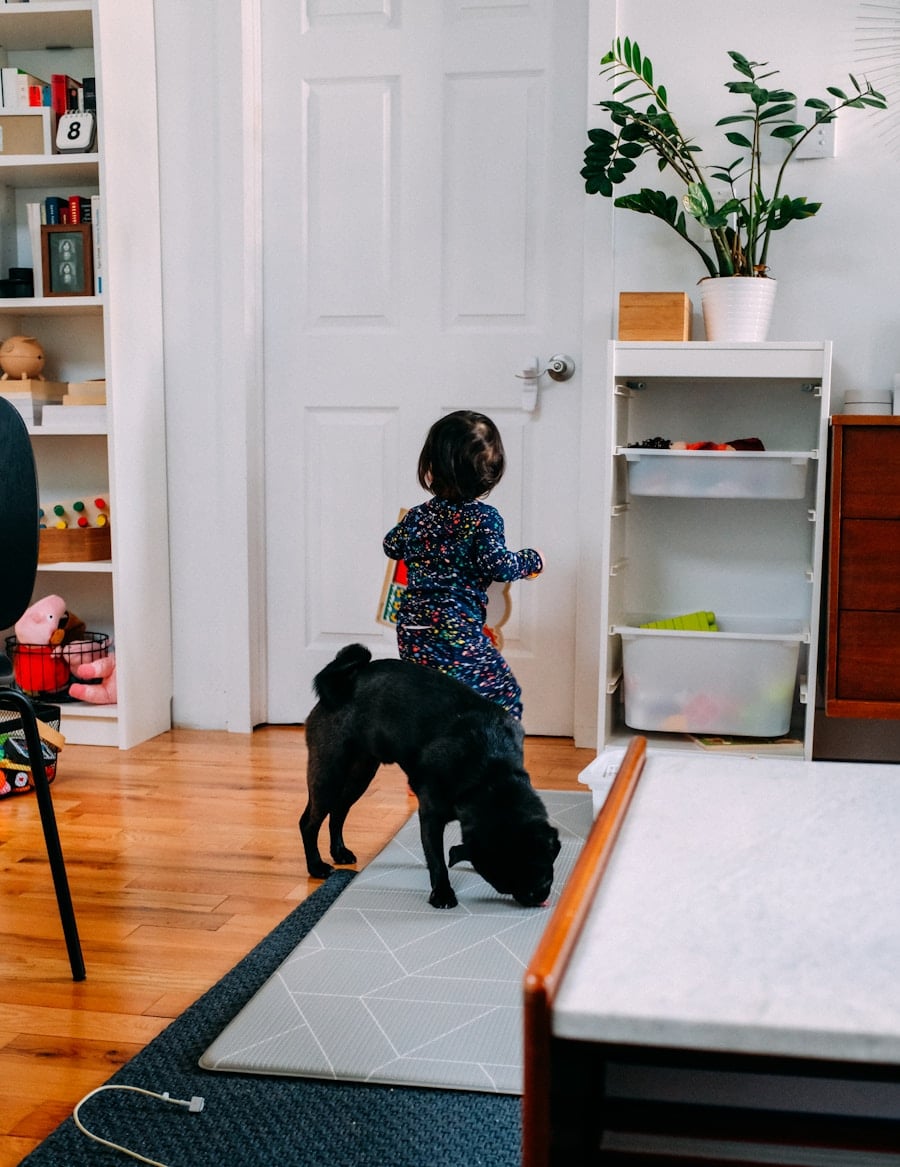The advent of smart home technology has revolutionized the way we interact with our living spaces, integrating artificial intelligence (AI) into everyday household functions. Smart home AI encompasses a range of devices and systems designed to enhance convenience, security, and efficiency within the home. From smart thermostats that learn user preferences to intelligent security cameras that can distinguish between family members and strangers, the capabilities of these systems are vast and continually evolving.
As families increasingly adopt these technologies, the focus on child safety has become paramount, prompting developers to create features specifically aimed at protecting the youngest members of the household. Smart home AI operates through interconnected devices that communicate with one another, often managed through a central hub or smartphone application. This interconnectedness allows for real-time monitoring and control, enabling parents to oversee their children’s activities even when they are not physically present.
The integration of AI enhances these systems by allowing them to learn from user behavior, adapt to changing circumstances, and provide insights that can help parents make informed decisions about their children’s safety. As we delve deeper into the various aspects of smart home AI, it becomes clear that its potential to enhance child safety is both significant and multifaceted.
Key Takeaways
- Smart Home AI refers to the use of artificial intelligence in home automation systems to enhance convenience and safety.
- Child safety features in Smart Home AI include voice recognition, facial recognition, and geofencing to ensure the security and well-being of children.
- Smart Home AI offers monitoring capabilities such as video surveillance, activity tracking, and remote access to ensure parents can keep an eye on their children at all times.
- The benefits of Smart Home AI for child safety include real-time alerts, emergency response integration, and the ability to set custom safety protocols.
- Potential risks and concerns with Smart Home AI include privacy issues, data security, and the potential for over-reliance on technology for child supervision.
Child Safety Features in Smart Home AI
One of the most compelling aspects of smart home AI is its ability to incorporate child safety features that provide peace of mind for parents. For instance, smart locks can be programmed to allow access only to trusted individuals, ensuring that children cannot inadvertently let in strangers. These locks can also send notifications to parents when they are engaged, allowing for real-time awareness of who is entering or leaving the home.
Additionally, some systems offer geofencing capabilities, which can alert parents if their child strays beyond a designated area, providing an extra layer of security. Moreover, smart cameras equipped with AI can analyze video feeds to detect unusual behavior or movements. For example, if a child is seen wandering outside during late hours or entering restricted areas within the home, the system can send immediate alerts to parents’ smartphones.
These cameras often come with two-way audio features, enabling parents to communicate with their children directly through the device. This capability not only allows for monitoring but also fosters a sense of connection, as parents can reassure their children even when they are away from home.
Monitoring Capabilities of Smart Home AI

The monitoring capabilities of smart home AI extend far beyond traditional surveillance methods. Advanced AI algorithms can process vast amounts of data from various sensors and devices, providing parents with comprehensive insights into their children’s activities and behaviors. For instance, smart motion sensors can track movement patterns throughout the house, alerting parents if a child is awake during bedtime or if they are accessing areas that are off-limits.
This level of monitoring is particularly beneficial for younger children who may not yet understand the importance of safety protocols. In addition to physical monitoring, smart home AI can also track digital interactions. Many families now utilize smart devices for educational purposes, and AI can help ensure that children are engaging with age-appropriate content.
Parental control features allow parents to set restrictions on internet usage and monitor online activities, providing a safeguard against inappropriate content or excessive screen time. By combining physical and digital monitoring capabilities, smart home AI creates a holistic approach to child safety that addresses both real-world and online environments.
Benefits of Smart Home AI for Child Safety
The benefits of integrating smart home AI into child safety measures are numerous and impactful. One significant advantage is the ability to create a safer environment through automation. For example, smart lighting systems can be programmed to turn on automatically when a child enters a room or hallway, reducing the risk of accidents in dark spaces.
Similarly, smart thermostats can maintain comfortable temperatures while alerting parents if a room becomes too hot or cold, which is crucial for infants and young children who are more vulnerable to temperature fluctuations. Furthermore, the convenience offered by smart home AI allows parents to focus more on their children rather than constantly worrying about their safety. With real-time alerts and remote monitoring capabilities, parents can engage in other activities—whether working from home or running errands—while still keeping an eye on their children’s well-being.
This balance between oversight and independence fosters a sense of security for both parents and children, allowing families to thrive in a connected environment.
Potential Risks and Concerns with Smart Home AI
Despite the myriad benefits associated with smart home AI, there are also potential risks and concerns that families must consider. One primary issue is privacy; as these systems collect data on family activities and behaviors, there is a risk that sensitive information could be accessed by unauthorized individuals or misused by third-party companies. Parents must be vigilant about securing their networks and understanding the privacy policies associated with their devices to mitigate these risks.
Another concern revolves around over-reliance on technology for child safety. While smart home AI can significantly enhance monitoring capabilities, it should not replace active parental involvement. There is a danger that parents may become complacent, assuming that technology alone will keep their children safe without engaging in direct supervision or communication.
Striking a balance between utilizing technology and maintaining personal oversight is essential for ensuring comprehensive child safety.
Tips for Implementing Smart Home AI for Child Safety

Research and Selection of Devices
Families should conduct thorough research on available devices and systems to identify those that best meet their specific needs. Prioritizing features such as real-time alerts, remote access, and user-friendly interfaces can significantly enhance the overall experience.
Establishing Guidelines and Open Communication
Establishing clear guidelines for device usage within the household is crucial. Parents should communicate openly with their children about the purpose of these technologies and involve them in discussions about safety protocols. Teaching children how to use devices responsibly fosters a sense of ownership and accountability while reinforcing the importance of safety measures.
Maintenance and Review of Device Settings
Regularly reviewing device settings and privacy controls ensures that families remain proactive in safeguarding their information and maintaining a secure environment.
Future Developments in Smart Home AI for Child Safety
As technology continues to advance at an unprecedented pace, the future of smart home AI holds exciting possibilities for enhancing child safety further. One area poised for growth is the integration of machine learning algorithms that can predict potential hazards based on historical data and user behavior patterns.
Moreover, advancements in voice recognition technology may lead to more intuitive interactions between children and smart devices. Future systems could be designed to recognize individual voices and respond accordingly, allowing for personalized experiences tailored to each family member’s needs. This level of customization could enhance both safety and engagement, making it easier for children to interact with technology in a safe manner.
The Role of Smart Home AI in Enhancing Child Safety and Monitoring
In an era where technology permeates every aspect of our lives, smart home AI stands out as a transformative force in enhancing child safety and monitoring within households. By integrating advanced features designed specifically for protecting children, these systems empower parents with tools that promote security while fostering independence for their kids. As families navigate the complexities of modern life, the role of smart home AI will undoubtedly continue to evolve, offering innovative solutions that address emerging challenges in child safety.
The ongoing development of smart home technologies promises not only improved monitoring capabilities but also greater peace of mind for parents striving to create safe environments for their children. As we look ahead, it is essential for families to remain informed about both the benefits and potential risks associated with these technologies while actively engaging in discussions about safety practices within their homes.
If you are interested in enhancing your child’s safety and monitoring at home through smart technology, you may also want to consider investing in a suitable PC for students. Enicomp offers a helpful guide on how to choose the right PC for your child’s educational needs here. Additionally, if you are looking for a seamless customer interaction platform, you may want to explore SmartSender, a chatbot platform that can enhance communication with customers here. And for those interested in the latest smartphone technology, Enicomp also provides insights on the possibilities unlocked by the Samsung Galaxy S22 here.
FAQs
What is Smart Home AI?
Smart Home AI refers to the use of artificial intelligence technology in household devices and systems to automate and enhance various functions such as security, energy management, and entertainment.
How does Smart Home AI enhance child safety?
Smart Home AI enhances child safety by providing real-time monitoring and alerts for potential hazards such as fire, carbon monoxide, and intruders. It can also control access to certain areas of the home and provide remote monitoring capabilities.
What are some examples of Smart Home AI devices for child safety?
Examples of Smart Home AI devices for child safety include smart cameras, smart locks, smart smoke detectors, and smart thermostats. These devices can be integrated into a centralized system for comprehensive monitoring and control.
How does Smart Home AI help in monitoring children?
Smart Home AI helps in monitoring children by providing parents with real-time alerts and notifications about their activities and whereabouts. It can also track and analyze patterns of behavior to identify any potential risks or concerns.
What are the privacy considerations when using Smart Home AI for child safety?
Privacy considerations when using Smart Home AI for child safety include ensuring that data collected is secure and only accessible to authorized users. It is important to carefully review the privacy policies of the devices and systems being used to protect the privacy of children and family members.

